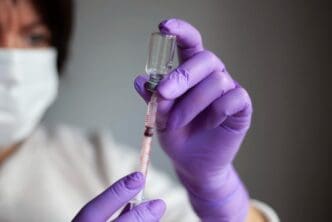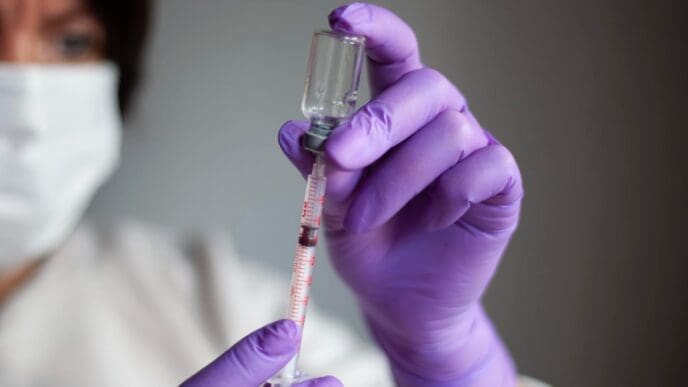For millions struggling with the weight of anxiety or the fog of depression, a glass of wine or a cold beer can feel like a lifeline—a quick, accessible tool for quieting a racing mind or lifting a heavy mood. This common practice of self-medication, however, is a dangerous paradox. While alcohol can provide fleeting, temporary relief, a vast body of scientific evidence shows it ultimately exacerbates the very conditions it’s used to treat, creating a destructive cycle of dependency and worsening mental health. The short-term calm comes at a high long-term cost, as alcohol disrupts the brain’s delicate chemical balance, impairs sleep, and rewires neural circuits in ways that can deepen both anxiety and depression.
The Deceptive Promise: Why Alcohol Feels Like a Solution
The initial appeal of alcohol as a coping mechanism is rooted in its direct effects on the brain. As a central nervous system depressant, its impact is felt within minutes, offering a powerful, albeit temporary, escape from psychological distress.
The Initial Calming Effect: A Neurochemical Trick
When alcohol enters the bloodstream and reaches the brain, it primarily works by enhancing the effects of a neurotransmitter called gamma-aminobutyric acid, or GABA. GABA is the brain’s main “calming” or inhibitory chemical, responsible for slowing down brain activity, reducing neuronal excitability, and promoting feelings of relaxation.
By mimicking and boosting GABA’s effects, alcohol effectively puts the brakes on the central nervous system. This is why a drink can make you feel less inhibited, more relaxed, and less anxious. The parts of your brain responsible for worry, rumination, and self-judgment become less active, providing a short-lived reprieve from mental turmoil.
A Temporary Mood Boost: The Dopamine Rush
Simultaneously, alcohol triggers a release of dopamine in the brain’s reward pathway. Dopamine is a neurotransmitter heavily associated with pleasure, motivation, and reinforcement. This surge creates a sense of mild euphoria and well-being, temporarily counteracting the anhedonia (inability to feel pleasure) that is a hallmark of depression.
This dual-action—calming the brain via GABA and stimulating pleasure via dopamine—is what makes alcohol such a potent, but deceptive, form of self-medication. It offers a quick and predictable shift in one’s emotional state.
The Rebound Effect: When Relief Turns to Distress
The brain, however, is an expert at maintaining balance, a state known as homeostasis. When alcohol artificially alters its chemistry, the brain fights to counteract the changes. It is this biological pushback that leads to the worsening of anxiety and depression once the alcohol wears off.
Understanding ‘Hangxiety’
As the body metabolizes alcohol, the brain scrambles to re-establish its normal equilibrium. To compensate for alcohol’s artificial GABA boost, it downregulates its own GABA receptors and ramps up the production of glutamate, the brain’s primary excitatory neurotransmitter. This creates a state of neurochemical imbalance heavily skewed toward excitation.
The result is a phenomenon many drinkers recognize as “hangxiety”—a state of heightened anxiety, irritability, restlessness, and dread that occurs in the hours and day after drinking. The very anxiety you sought to numb returns with greater intensity, driven by a brain that is now over-stimulated and on high alert. For someone with a pre-existing anxiety disorder, this rebound effect can be particularly severe, triggering panic attacks or intense periods of worry.
The Disruption of Sleep Architecture
Many people use alcohol as a sleep aid, and while it does have sedative properties that can help you fall asleep faster, it wreaks havoc on your sleep quality. Alcohol significantly suppresses REM (Rapid Eye Movement) sleep, the stage most critical for emotional regulation, memory consolidation, and processing difficult experiences.
By robbing you of restorative REM sleep, alcohol ensures you wake up feeling mentally and emotionally unrefreshed. This sleep disruption is a major contributor to mood instability, poor cognitive function, and increased stress levels, directly feeding the symptoms of both depression and anxiety.
The Long-Term Impact on Mental Health
Occasional drinking can cause temporary mood disturbances, but chronic or heavy use can lead to lasting and profound changes in brain structure and function, solidifying the link between alcohol and poor mental health.
Rewiring the Brain for Anxiety and Depression
With repeated exposure to alcohol, the brain’s adaptations become more permanent. The constant cycle of intoxication and withdrawal can damage neural pathways and alter the baseline levels of key neurotransmitters. The brain becomes less efficient at producing its own calming chemicals and more sensitive to stress hormones like cortisol.
Essentially, chronic alcohol use can rewire the brain to exist in a state of heightened anxiety and depressed mood even when sober. This creates a powerful drive to continue drinking simply to feel “normal,” establishing the core of alcohol dependence.
The Vicious Cycle of Self-Medication
This physiological process fuels a dangerous psychological loop. An individual feels anxious or depressed and drinks to find relief. The alcohol wears off, leading to rebound anxiety and a lower mood. These intensified negative feelings create an even stronger urge to drink again to find relief.
Over time, tolerance develops, meaning more alcohol is needed to achieve the same initial effect. This escalating pattern not only worsens the underlying mental health condition but also constitutes a substance use disorder, a separate and serious illness that requires its own treatment.
Co-Occurring Disorders: The Chicken and the Egg Dilemma
The relationship between alcohol use disorders and mental health conditions like anxiety and depression is complex and bidirectional. Clinicians refer to this as having “co-occurring disorders” or a “dual diagnosis.”
For some, a primary anxiety or mood disorder precedes the heavy drinking, which begins as a coping strategy. For others, chronic heavy drinking is the primary problem, which then induces a substance-induced depressive or anxiety disorder. In many cases, the two conditions become so intertwined that it’s impossible to determine which came first. What is clear is that they feed each other, and effective treatment must address both simultaneously.
Finding Healthier Coping Mechanisms
Breaking the cycle of self-medicating with alcohol requires acknowledging its true impact and actively seeking healthier strategies for managing mental health.
The first and most crucial step for anyone concerned about their drinking is to speak with a healthcare professional. A doctor or therapist can provide a proper assessment, recommend a course of action, and, if necessary, oversee a safe detoxification process, as alcohol withdrawal can be medically dangerous.
Evidence-based therapies, particularly Cognitive Behavioral Therapy (CBT), are highly effective. CBT helps individuals identify the triggers that lead to drinking, challenge the distorted thoughts that fuel anxiety and depression, and develop new, healthier coping skills. Support groups like Alcoholics Anonymous (AA) or SMART Recovery also provide invaluable peer support and accountability.
Beyond formal treatment, building a lifestyle that supports mental wellness is key. Regular physical exercise is a powerful antidepressant and anxiolytic. Mindfulness meditation and breathing exercises can help manage stress in the moment without resorting to a substance. Prioritizing a consistent sleep schedule and a nutrient-dense diet can help restore brain health and stabilize mood.
Conclusion
The belief that alcohol is an effective salve for anxiety and depression is one of the most pervasive and damaging myths in our culture. While its immediate effects can feel like a welcome escape, alcohol is a false friend to mental well-being. By disrupting brain chemistry, sabotaging sleep, and fostering a vicious cycle of dependence, it digs a deeper hole for those already struggling. True and lasting relief comes not from numbing the pain, but from addressing its roots through healthier coping strategies, professional support, and the courageous decision to find a better way to heal.












